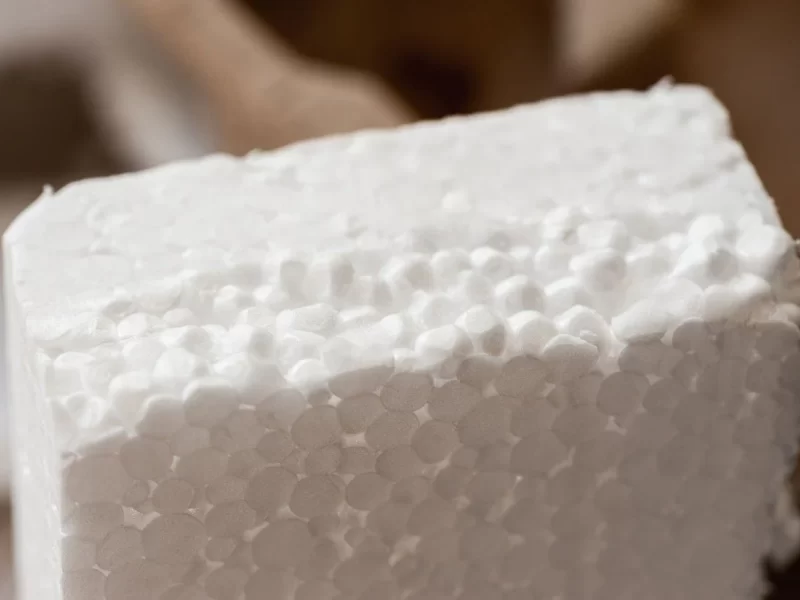
Are you tired of high energy bills and inconsistent temperatures in your home? Look no further than styrofoam insulation! Often overlooked, this type of insulation offers a wide range of benefits for homeowners. Not only does it help regulate indoor temperature. But it also reduces noise pollution and can even improve the air quality in your home. In this blog post, we’ll explore the many advantages of using styrofoam as an insulation material. Why it may be the perfect solution for your home. So sit back, relax, and let’s dive into the world of styrofoam insulation!
What is Styrofoam?
Styrofoam insulation is a material that has been in use since the 1960s and 1970s. It is made of styrene beads that are cooled and then compressed to create an insulating material. Styrofoam insulation is not a recommended insulation material because it can release harmful chemicals when it burns, but it is still in use today because of its low cost and lightweight nature.
It can be used in place of other types of insulation in your home, such as fibreglass or foam board. It is also a good choice for walls and ceilings because it does not require special installation techniques. Styrofoam insulation is not as effective at keeping heat out as other types of insulation, but it is cheaper and easier to install.
How is Styrofoam Made?
Styrofoam insulation is made from a mixture of styrene and foamed polystyrene. Styrene is a synthetic polymer that is heat-resistant, but it can also emit harmful chemicals when burned. Foamed polystyrene is made from natural gas and air, which makes it environmentally friendly. Styrofoam insulation is a popular material for use in buildings because it’s cheap to produce and it offers good thermal insulation properties.
styrene is a synthetic polymer that is heat-resistant, but it can also emit harmful chemicals when burned. foamed polystyrene is made from natural gas and air, which makes it environmentally friendly.
Styrofoam is made from a type of insulation called polystyrene. The insulation is heated until it becomes foam, and then it is shaped into small pieces. These pieces are then cut into smaller pieces, and the smaller pieces are put into a machine that cuts them into tiny pieces.
Types of Styrofoam Insulation
Styrofoam insulation is a popular material for insulation because it is lightweight, inexpensive, and can be installed quickly. There are a few different types of styrofoam insulation, each with its own set of benefits.
densified polystyrene (DPST) is the most common type of styrofoam insulation. It’s made from small Styrofoam pieces that have been combined into larger pieces and then heated to a very high temperature. This process makes the Styrofoam much more dense than regular Styrofoam and increases its R-value.
is the most common type of styrofoam insulation. It’s made from small Styrofoam pieces that have been combined into larger pieces and then heated to a very high temperature. This process makes the Styrofoam much more dense than regular Styrofoam. It increases its R-value. extruded polystyrene (XPS) is another type of styrofoam insulation that’s usually denser than DPST but less expensive. Extrusion machines heat the foam together until it becomes a solid piece, which makes XPS much harder than DPST to cut or tear.
Pros and Cons
There are many pros to using styrofoam insulation in your home. It is an affordable way to improve your energy efficiency and keep your home cooler in the summer and warmer in the winter. However, there are also some cons to consider before making a decision to insulate with styrofoam.
The biggest con is that styrofoam insulation can be difficult and time-consuming to remove. If it is installed improperly, it can cause thermal and acoustic problems in your home. Additionally, if styrofoam insulation is damaged, it can release harmful chemicals that could harm you and your family members.
Though there are some drawbacks to using styrofoam insulation, it is a great option for those looking for an affordable way to improve their energy efficiency and comfort levels in their homes.
Conclusion
Styrofoam insulation is a popular material for use in homes and offices because it is lightweight, easy to cut, and provides good thermal insulation. But styrofoam insulation can also be harmful to the environment and our health. There are ways to reduce its environmental impact. You can make informed decisions about whether or not this material should be used in your home or office.
Styrofoam insulation is a popular material for use in homes and offices. Because it is lightweight, easy to cut, and provides good thermal insulation. But it can also be harmful to the environment and our health. There are ways to reduce its environmental impact. By understanding the benefits and risks, you can make informed decisions about whether or not this material should be used in your home or office.
